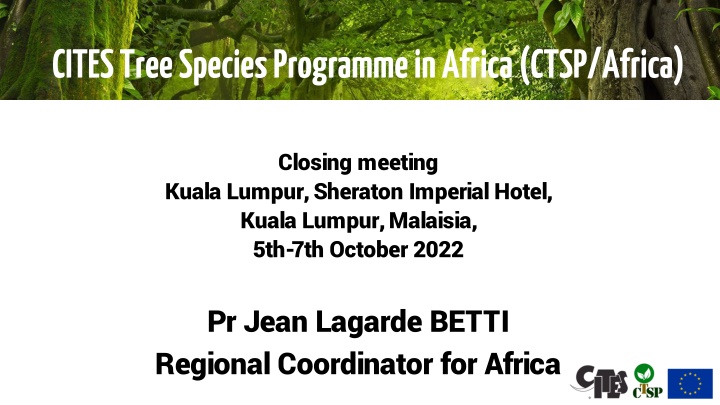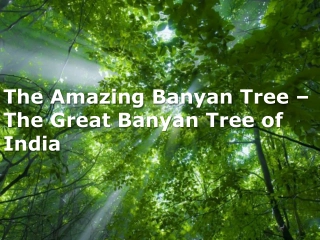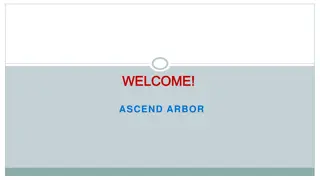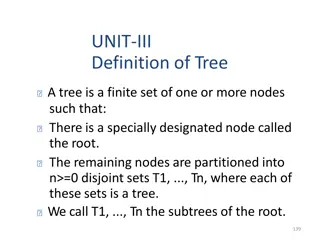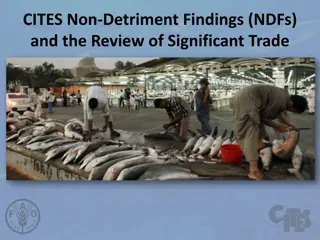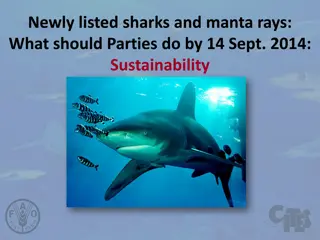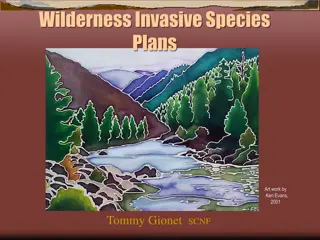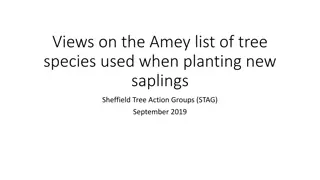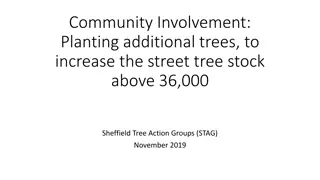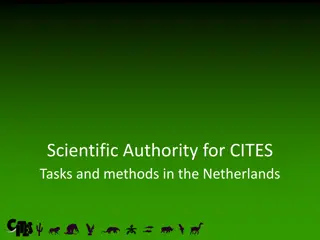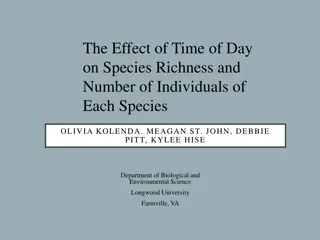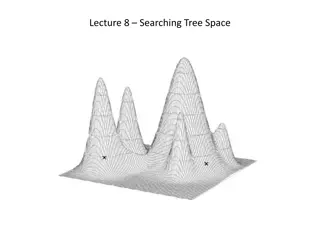CITES Tree Species Programmein Africa (CTSP/Africa)
The CTSP/Africa program aims to enhance conservation efforts for various tree species in Africa. The closing meeting in Kuala Lumpur highlighted achievements such as strategic action plans, research progress, and the initiation of domestication activities. The program's impact is evident through established management plans, identification guides, and successful research outcomes. Moving forward, focusing on implementing NDF and SMP guidelines is crucial for the program's future success.
Download Presentation

Please find below an Image/Link to download the presentation.
The content on the website is provided AS IS for your information and personal use only. It may not be sold, licensed, or shared on other websites without obtaining consent from the author.If you encounter any issues during the download, it is possible that the publisher has removed the file from their server.
You are allowed to download the files provided on this website for personal or commercial use, subject to the condition that they are used lawfully. All files are the property of their respective owners.
The content on the website is provided AS IS for your information and personal use only. It may not be sold, licensed, or shared on other websites without obtaining consent from the author.
E N D
Presentation Transcript
CITES Tree Species Programmein Africa (CTSP/Africa) Closing meeting Kuala Lumpur, Sheraton Imperial Hotel, Kuala Lumpur, Malaisia, 5th-7th October 2022 Pr Jean Lagarde BETTI Regional Coordinator for Africa
CTSP Project status in Africa: overview 6 single-country projects 3 subregional (2 tri- national and 1 bi-national ) projects; 12 countries Madagascar; 1 Central Africa/Congo Basin; 4 West Africa; 4 East Africa; 3
CTSP Project status: overview Work areas: Non-detriment Findings (NDF) Capacity building; 12 Tech. coop (0.58) NDF; 12 Marking & traceability (incl. livelihoods) Cap.-building NDF (1.15) (0.73) Marking (0.83) and traceability ; 6 Identification Identificati on; 6 Marking (0.65) Identification Capacity-building & governance
Species coverage All species are included in App. II Guibourtia spp. - African rosewood Osyris lanceolata - African sandalwood Pericopsis elata - African teak Afromosia assamela Prunus africana - African cherry Pterocarpus erinaceus African rosewood
Africa -conclusions State of the art on research, harvesting, management, and control well established for each target tree species in each country; Strategic action plans for some countries (C te d Ivoire, Gabon, Kenya, Uganda, Tanzania, ) or detail management plans for other countries (Burundi, Benin, Togo, Cameroon, DRC, , ) well done; Identification guides produced for Guibourtia spp, Pericopsis elata, and Pterocarpus erinaceus; NDF drafted and export quota defined based on management inventories for Prunus africana (Cameroon and DRC) and Guibourtia spp (DRC and Gabon) or based on exploitation inventories for Pericopsis elata (DRC); Domestication/plantation activities initiated on Prunus africana (Burundi) and Pterocarpus erinaceus (C te d Ivoire) Research results of the Program defended in term of Msc (Burundi, Cameroon), PhD (Cameroon), or published in peer review journals (Cameroon).
Africa Way forward Assisting range countries in the implementation of guidelines of NDFs and SMPs remains a key issue to be tackled clearly for a future programme as many concerns have been observed on the little improvement of livelihoods of local communities and little respect of established standards/norms in the field by trade companies and harvesters; The implementation of the guidelines of SMPs/NDFs includes: conducting every year systematic inventories of exploitable trees in annual plots (exploitation inventories), enforcing the control and monitoring scheme, training people on how to harvest sustainably the product, conducting research as to better refine management parameters; Having in mind some achievements encountered in this first phase, the work on new listing tree species will be logically scheduled as follow: (1) establishing a clear state-of-the art on aspects related to the research (biology, ecology, phenology, ), harvesting regime, management measures, processing, transport, and export, and (2) based on the results of the assessment conducted (state-of-the-art), build a roadmap/action plan presenting priority needs and activities to be conducted during the program. Increase number of species and countries
Thank you Jean Lagarde Betti, Regional Coordinator Africa
